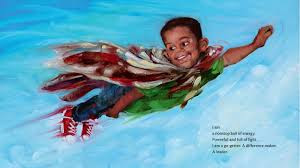"I am not who I say I am,
and Marla isn't who she thinks she is.
I am a girl trying to forget.
She is a woman trying to remember."
Allison has taken enough of her father's abuse. His latest girlfriend, Kelly-Anne, has moved on. In a fit of rage, her father burns Allison's face. She no longer has anyone there to protect her. So, she runs away - she wants to find Kelly-Anne and live with her. But, Kelly-Anne is not where she is supposed to be, and Allison must find a place for herself. She finds it in a house that she thinks is empty. It is not.
Its owner is an elderly woman who has dementia. Upon meeting her, Marla thinks that Allison is a childhood friend, Toffee. She invites Allison to stay. In the beginning, Allison pretends that she is Toffee. She doesn't want to be Allison anymore. The two get along for the most part. Marla is generally happy with the company; Allison has found food, money, and a place to stay. She hides when a negligent caregiver visits and also when Marla's mean son is there. Allison is appalled at the way they treat her new friend. That helps her make the decision to stay and make Marla's life worth living.
Allison's memories of her previous life are presented to help readers understand what has brought her to this place, and to make understanding the connection between the two more evident. The sympathy and love that is established is mutual and will have a strong impact on teens who read their story. Telling the story in verse, with compact and powerful words, has real impact. The ability to do so, as Sarah Crossan does so well, is quite the remarkable feat.
Though filled with excruciating pain, bawdy humor, kindness, mutual admiration, and uncertainty, its poignant ending is hopeful. I will reread it; the next time more slowly - now that I know Allison and Marla's story - to savor the brilliant words and to learn more about each of them. I know I missed much as I tore through it that first time.
"Single Ladies
Marla and I are giggling,
clinging to each other,
swaying, spinning to
Beyonce singing out
from the radio's tinny speakers.
Now like this! Like this! I tell her.
I hold one hand aloft and twirl it
like any single lady would,
and Marla copies the choreography -
hands in the air,
hands on hips,
fist punching forward,
hair flicked back."






















































